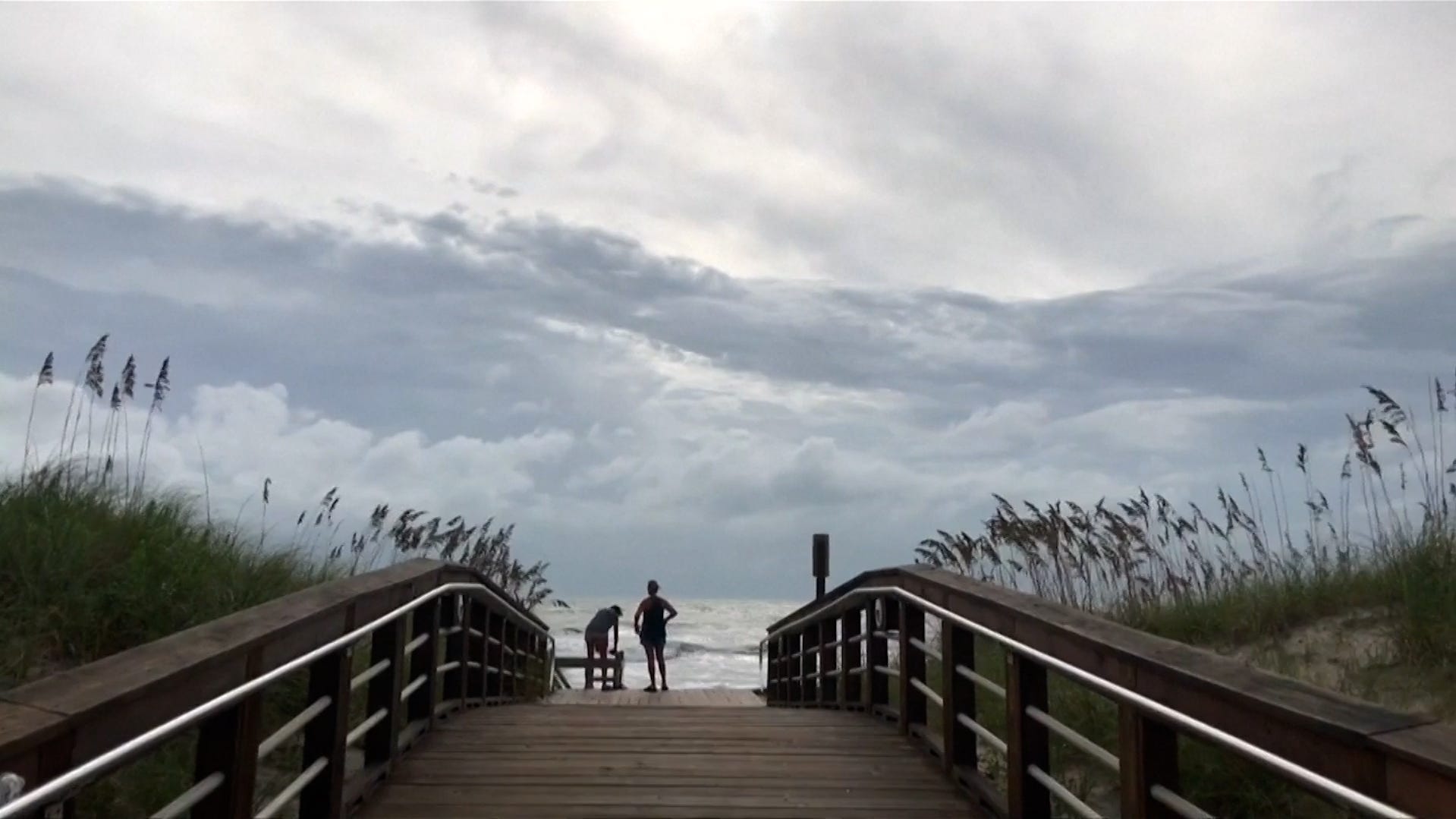Tropical Storm Erick forms in Pacific, could become hurricane: See tracker

Tropical Storm Erick has formed in the Pacific and is expected to quickly strengthen into a hurricane, the National Hurricane Center said Tuesday.
The storm is currently located about 450 miles southeast of Punta Maldonado, Mexico, according to the hurricane center, with maximum sustained winds near 40 mph with higher gusts.
Hurricane center forecasters said Erick is expected to strengthen into a hurricane by Wednesday and the storm is expected to approach the coast of southern Mexico by Wednesday night. The storm could produce rainfall totals of 5 to 10 inches, with maximum totals near 15 inches, across the Mexican states of Chiapas, Oaxaca, and Guerrero and coastal sections of Guatemala.
Additionally, the hurricane center said rainfall totals of 2 to 6 inches are possible across interior portions of Southeast Mexico, El Salvador, interior Guatemala and the Mexican states of Chiapas, Tabasco and Veracruz.
The NHC said the swells generated by Erick are "likely to to cause life-threatening surf and rip current conditions" in southern Mexico.
Tropical Storm Erick path tracker
This forecast track shows the most likely path of the center of the storm. It does not illustrate the full width of the storm or its impacts, and the center of the storm is likely to travel outside the cone up to 33% of the time.
Tropical Storm Erick spaghetti models
Illustrations include an array of forecast tools and models, and not all are created equal. The hurricane center uses only the top four or five highest-performing models to help make its forecasts.
How do hurricanes form?
Hurricanes are born in the tropics, above warm water. Clusters of thunderstorms can develop over the ocean when water temperatures exceed 80 degrees Fahrenheit. If conditions are right, the clusters swirl into a storm known as a tropical wave or tropical depression.
A tropical depression becomes a named tropical storm once its sustained wind speeds reaches 39 miles per hour. When its winds reach 74 mph, the storm officially becomes a hurricane.
Prepare now for hurricanes
Delaying potentially life-saving preparations could mean waiting until it’s too late. "Get your disaster supplies while the shelves are still stocked, and get that insurance checkup early, as flood insurance requires a 30-day waiting period," NOAA recommends.
- Develop an evacuation plan: If you are at risk from hurricanes, you need an evacuation plan. Now is the time to begin planning where you would go and how you would get there.
- Assemble disaster supplies: Whether you’re evacuating or sheltering-in-place, you’re going to need supplies not just to get through the storm but for the potentially lengthy aftermath, NOAA said.
- Get an insurance checkup and document your possessions: Contact your insurance company or agent now and ask for an insurance check-up to make sure you have enough insurance to repair or even replace your home and/or belongings. Remember, home and renters insurance doesn’t cover flooding, so you’ll need a separate policy for it. Flood insurance is available through your company, agent, or the National Flood Insurance Program. Act now, as flood insurance requires a 30-day waiting period.
- Create a family communication plan: NOAA said to take the time now to write down your hurricane plan, and share it with your family. Determine family meeting places, and make sure to include an out-of-town location in case of evacuation.
- Strengthen your home: Now is the time to improve your home’s ability to withstand hurricane impacts. Trim trees; install storm shutters, accordion shutters, and/or impact glass; seal outside wall openings.
Gabe Hauari is a national trending news reporter at Paste BN. You can follow him on X @GabeHauari or email him at Gdhauari@gannett.com.